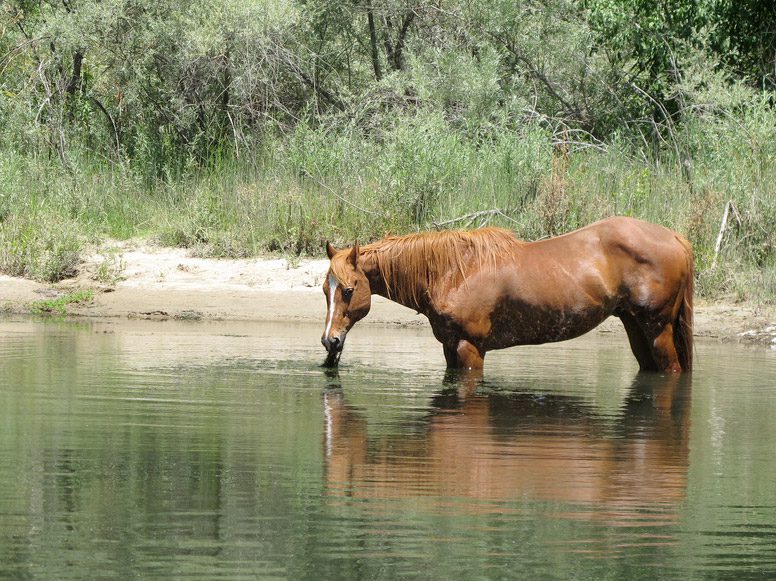Friday June 22, 2012
While it’s a little peculiar to see a horse feeding on river weeds, it is not uncommon to see horses, as well as other livestock, occupying or grazing along streams in the Western U.S. Excessive grazing of livestock can have detrimental impacts on riparian habitat and even on salmonid abundance. Platts (1991) conducted a review of 19 studies and concluded that livestock harmed riparian ecosystems based on results demonstrating that as livestock grazing increases, salmon abundance decreases. Impacts of grazing can include, increased erosion, soil compaction, stream width increase, higher nutrient concentrations, higher water temperature, lower macroinvertebrate abundance, and a decline in overhanging vegetation and tree and shrub biomass. Grazing in streams during salmon spawning season can result in trampling or infilling of redds (increased siltation and turbidity can fill the spaces in the gravel redds, suffocating eggs). Following best management practices (BMP), such as using exclusion fencing to maintain a riparian buffer and providing off-stream watering areas, can reduce the effect of livestock grazing on riparian areas and improve salmonid populations. The salmon would appreciate it, if this horse satisfied its craving elsewhere.

